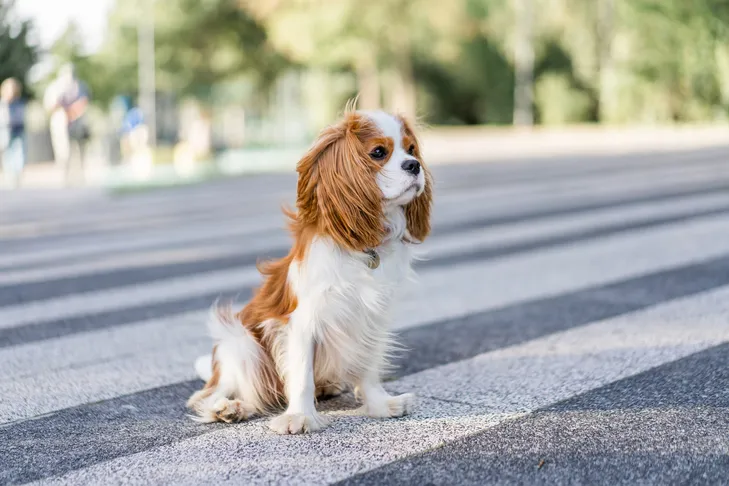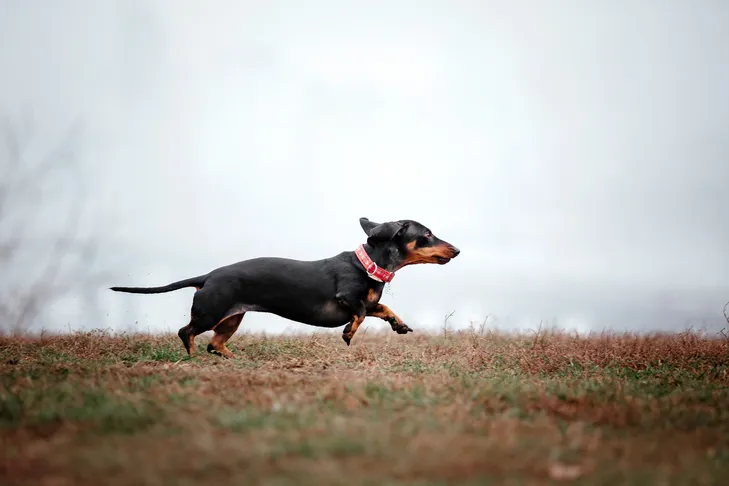It’s a universally recognized scenario: a dog owner repeatedly calling their dog to “come,” while their furry friend remains engrossed in sniffing the most interesting patch of grass. This expectation—for your dog to halt all activities and immediately return to you—is a significant request. A consistently reliable recall is far more than a convenience; it can be a lifesaver, especially in emergencies. You need to be confident that your dog will respond, no matter the situation. This fundamental skill is as vital as teaching your puppy some easy dog tricks to teach your puppy. Read on to discover how to cultivate an infallible recall with your canine companion.
Building the Foundation: Collar Grabs and the Name Game
Before diving into the “come” cue, it’s crucial to establish a few foundational understandings with your dog. The first is their name, which should always signify, “pay attention to me.” The second is comfortable acceptance of collar handling, an often-overlooked but critical safety aspect.
Teaching Your Dog Their Name
Your primary goal is to ensure that when your dog hears their name, their immediate reaction is to look to you, anticipating further instructions or a reward. Here’s how to play the “name game” effectively:
- Start in a quiet environment, holding a highly appealing treat.
- Say your dog’s name clearly. The instant they turn their head or make eye contact with you, mark that moment with a clicker or a verbal marker like “yes!”
- Immediately give them the treat and lavish them with praise.
- Repeat this exercise numerous times in short sessions throughout the day.
- Gradually increase the time your dog needs to maintain eye contact before receiving the reward. This teaches focus and reinforces that their name leads to positive outcomes.
In a short amount of time, your dog will instinctively respond to their name, understanding that it’s a signal for potential rewards and attention. Gaining your dog’s focus is the critical first step in developing a reliable recall.
 Cavalier King Charles Spaniel sitting attentively in a crosswalk at the park.
Cavalier King Charles Spaniel sitting attentively in a crosswalk at the park.
Playing ‘Gotcha’
Many dogs instinctively recoil when an owner reaches for their collar. However, in an emergency, you need to be able to securely grasp your dog. This “gotcha” exercise is also invaluable for routine tasks like clipping on a leash or guiding your dog for a bath. Similar to the name game, you’ll teach your dog that a collar grab is a precursor to something delightful. Follow these steps:
- Entice your dog towards you with an irresistible treat. As they approach, allow them to lick or gently nibble the treat, but don’t release it fully yet.
- While they are focused on the treat, calmly say “gotcha,” then slowly and gently take hold of your dog’s collar. Once you have a secure grip, release the remainder of the treat for them to enjoy.
- As training progresses, gradually make your collar grabs quicker and more confident. The goal is a firm, yet gentle, hold.
- Once your dog is comfortable with swift collar grabs, begin to offer the treat only after you’ve said “gotcha” and have taken hold of their collar.
- Practice collar grabs in various locations, always reinforcing with a reward after you successfully hold their collar.
Once your dog associates collar grabs with positive experiences, they will be less likely to evade your grasp after a recall. It’s counterproductive for them to come to you only to dart away as soon as you reach out. Ensuring your dog is comfortable with handling is one of the 5 commands to teach your dog for overall safety and control.
 Dachshund running freely through a vibrant green field.
Dachshund running freely through a vibrant green field.
The Core of Training: How to Teach a Reliable Recall
With the foundational skills in place, you are now ready to begin recall training. The fundamental secret to success is positioning yourself as the most engaging and rewarding element in your dog’s environment. If you’re where the excitement is, your dog will naturally gravitate towards you. Conversely, an angry, harsh, or even dull tone will diminish their interest. Begin your training in a calm, distraction-free setting with your dog on a leash, making it easier to be the center of attention without competition.
It’s also essential to use rewards your dog absolutely adores, whether it’s an exciting game of tug-of-war or a highly coveted piece of chicken. Make coming to you so incredibly worthwhile that they wouldn’t even consider not responding. Here are the steps to get you started:
- Start with your dog just a few feet away. Say their name, followed by “come,” and actively encourage them to approach you. You can pat your legs, make enthusiastic “kissy” noises, or clap your hands to draw their attention.
- The instant your dog begins to move towards you, use your clicker or verbal marker. As soon as they reach you, offer enthusiastic praise and immediately present their favorite reward.
- Once your dog consistently responds when called from a short distance, gradually increase the challenge by adding more space. Allow your dog to wander to the full extent of their leash before calling them back.
- Next, transition to an off-leash environment indoors, such as a quiet room, and repeat the process. To further encourage their approach, try running backward as you say “come.” Dogs often love a good chase!
- Continue practicing in different rooms throughout your home to generalize the behavior.
- Once your dog reliably rushes to you every time, introduce a “sit” command as they arrive. Call them, and as they reach you, ask for a “sit” before marking, praising, and rewarding. This teaches them to remain stationary upon arrival, rather than bouncing away after getting their treat.
- After successfully integrating the “sit,” periodically include a “gotcha” command. This reinforces that it’s acceptable for you to gently restrain them after they come.
Ensure that every time your dog comes when called, they receive an abundance of praise, loving pets, engaging play, and a high-value treat or toy. This is not the time to be frugal; your dog should perceive coming to you as an immensely enjoyable experience. You can even incorporate fun recall games like “round robin” (where multiple people take turns calling your dog) or “find me” (where you hide in another room before calling them). Remember, consistent practice of the best tricks to teach a puppy makes for a well-rounded and responsive companion.
Enhancing Recall: Gradually Adding Distractions
Once your dog reliably comes to you anywhere inside the house, it’s time to introduce distractions. Begin with minor distractions within your indoor training space, such as another pet in the room, someone cooking in the kitchen, or you gently tossing a ball in your hand. Gradually and systematically build up to more significant distractions. Understanding the proper order of commands to teach your dog can also help build a strong foundation for a reliable recall, ensuring each new skill complements the last.
Next, take your training outdoors. However, resist the urge to immediately let your dog roam free. Even if they have a 100% recall indoors, the outdoor environment presents a completely new set of challenges and temptations. Start with your dog on a standard 6-foot leash and diligently repeat all the previous steps. Then, progressively move to a longer line—a 20-foot or even 30-foot training line—slowly allowing your dog more distance as you train. The purpose of this longer line isn’t to reel your dog in if they disregard you, but to maintain control of the situation. If your dog gets too distracted, simply gather the leash as you calmly walk closer to them and restart the exercise. While some owners might explore german words to train a german shepherd for specific breed training, the core principles of consistent, positive reinforcement apply universally to recall, regardless of the language used for cues.
If your dog consistently ignores your recall attempts, it’s crucial to troubleshoot your training approach. There are various reasons your dog might not come when called. Re-evaluate your methods, take a few steps back in your training, and ensure you aren’t asking for too much too soon. With patience and persistence, your dog can develop a reliable recall in almost any environment. However, always be mindful that even the most well-trained dog isn’t 100% perfect. Therefore, only allow your dog off-leash in safe, secure environments where risks are minimized.
 French Bulldog wearing a stylish jacket walking calmly on a park path.
French Bulldog wearing a stylish jacket walking calmly on a park path.
A reliable recall is one of the most important commands you can teach your dog, ensuring their safety and your peace of mind. By building a strong foundation with name recognition and collar comfort, then systematically progressing through core recall exercises and gradually introducing distractions, you can achieve a truly dependable response. Consistency, high-value rewards, and positive reinforcement are your greatest tools. Remember to keep training sessions fun and engaging, fostering a strong bond built on trust and clear communication. With dedication, your dog will learn that returning to you is always the most rewarding choice, allowing for happier and safer adventures together.
